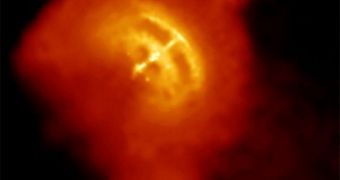Astrophysicists have been trying to figure out how the magnetic fields around pulsars form and behave, but their efforts did not manage to produce a widely-accepted answer. A new study proposes an additional explanation for this process, revealing it in detail.
Pulsars represent a particular class of neutron stars, which are characterized by the fact that the intense radiation beams they emit are oriented directly at Earth. If these jets are oriented in such a way that they are not visible from our location, then the object is referred to simply as a neutron star.
For many years, experts thought that the strong magnetic fields developing around pulsars were the results of charged particles rotating. However, if that were the case, then studies should have revealed an alignment between these fields and the rotational axis of the objects.
When advanced research techniques became available, investigators tested for such a correlation right away, but were unable to find it in the available data. As such, the mystery lingered on a while longer.
Now, Swedish researchers from the Lulea University of Technology (LUT) – led by experts Johan Hansson and Anna Ponga – say that neutron stars of all classes are actually made into giant magnets the moment they are formed. Most often, this happens after the core-collapse of a massive star.
The team says the magnetic moments of neutrons inside the dark stars become aligned when the object is first produced, resulting in what experts refer to as a “neutromagnet.” One of the main traits of such a structure would be its extreme stability.
Interestingly enough, the team proposes that the neutromagnet produces a magnetic field that instantly aligns with the original magnetic field produced by the neutron star. What is even more interesting is that the two don't necessarily have to be aligned with the spin axis of the object.
This may account for the weird discrepancies astrophysicists have been observing in pulsars' magnetic fields. The study Hansson and Ponga conducted reveals a potential explanation for this phenomenon, as well as answers to several other questions.
For example, it proposes that a neutromagnet can generate a magnetic field with a strength of about 10^12 Tesla, which is in tune with values astronomers measure around actual neutron stars, Universe Today reports.
One thing to keep in mind when conducting such investigations, the team says, is that the massive densities, masses and gravitational pulls involved in processes occurring around a neutron star produce phenomena and processes that do not have an equivalent anywhere else.

 14 DAY TRIAL //
14 DAY TRIAL //